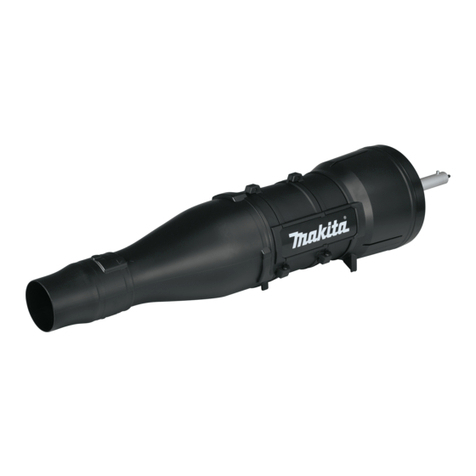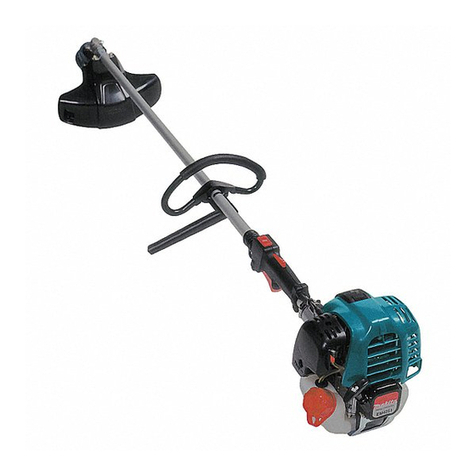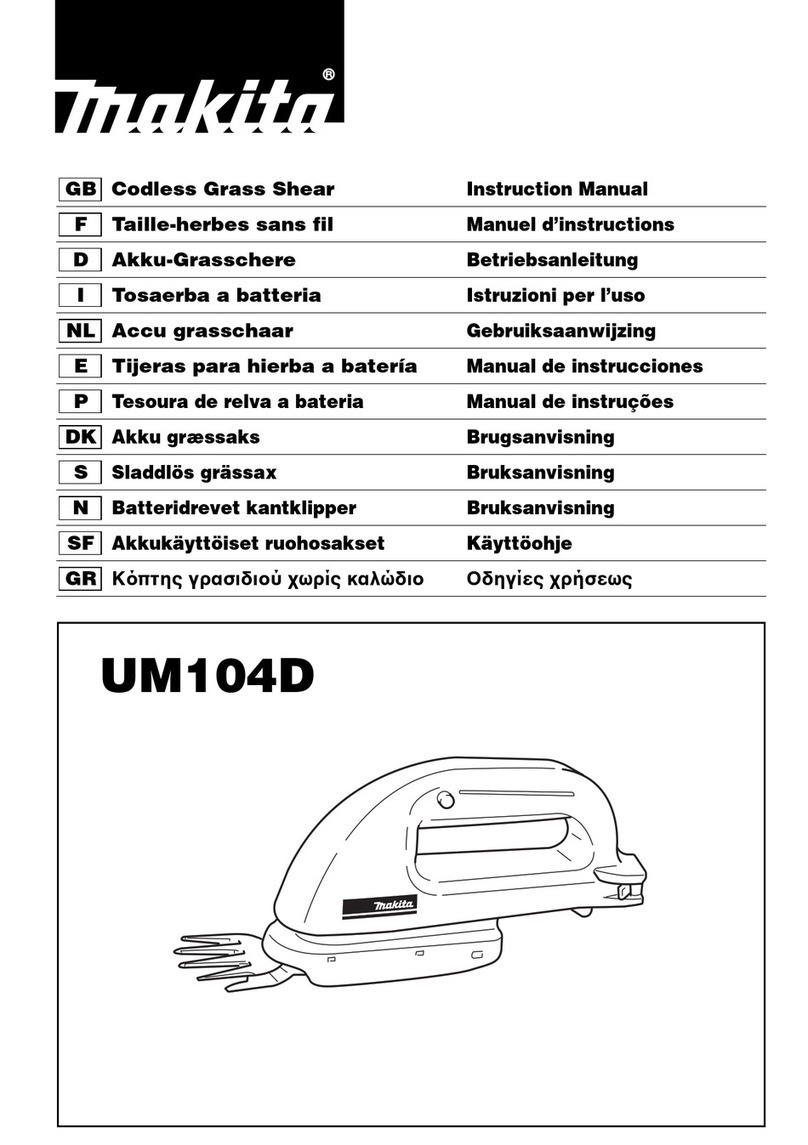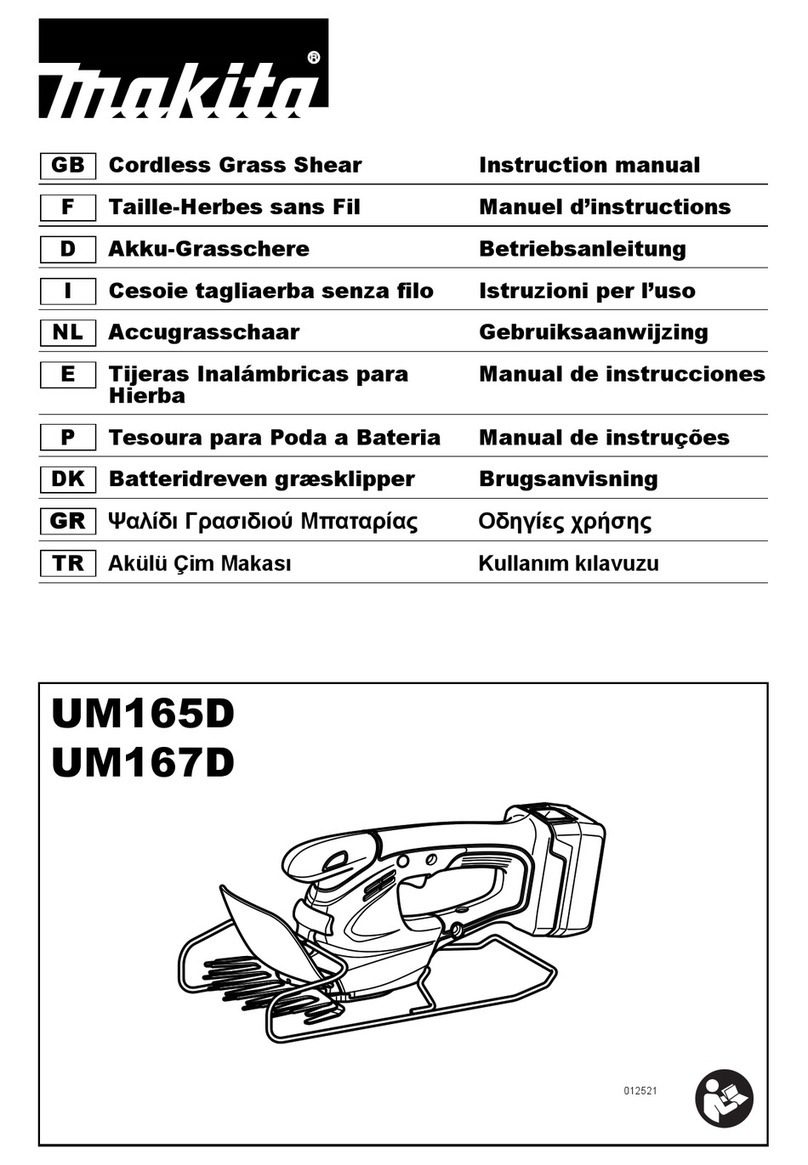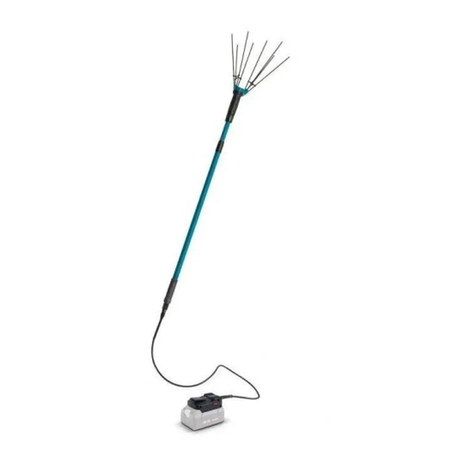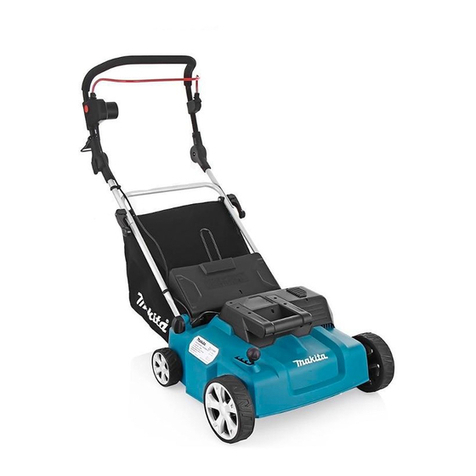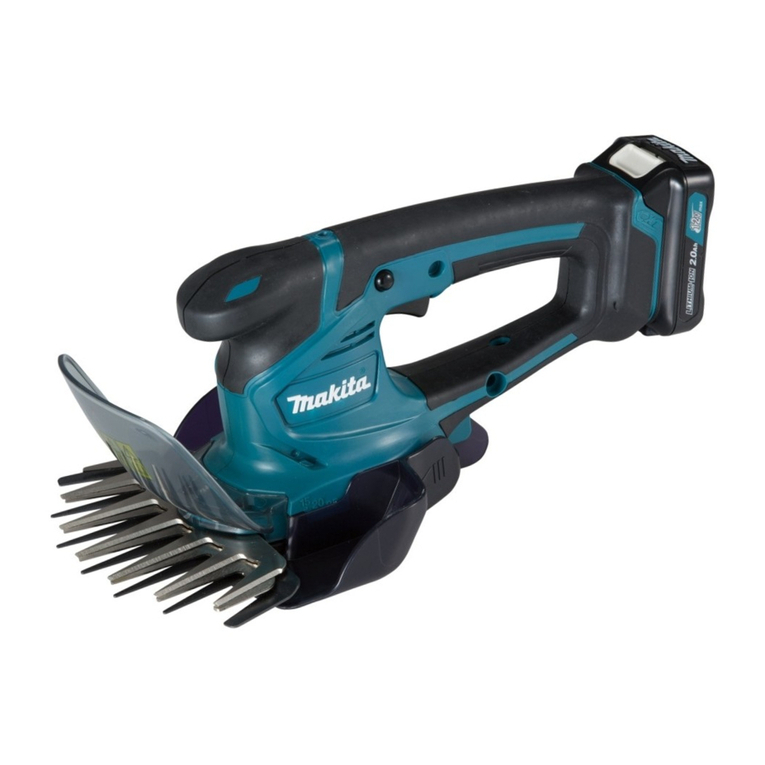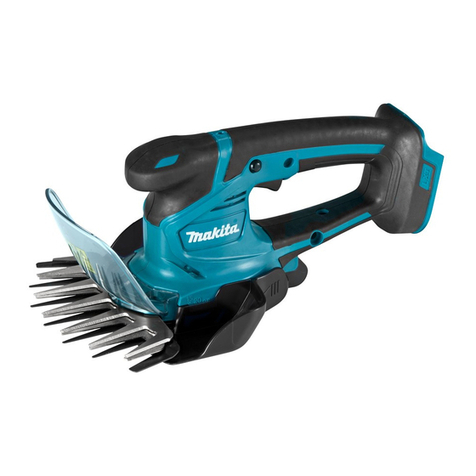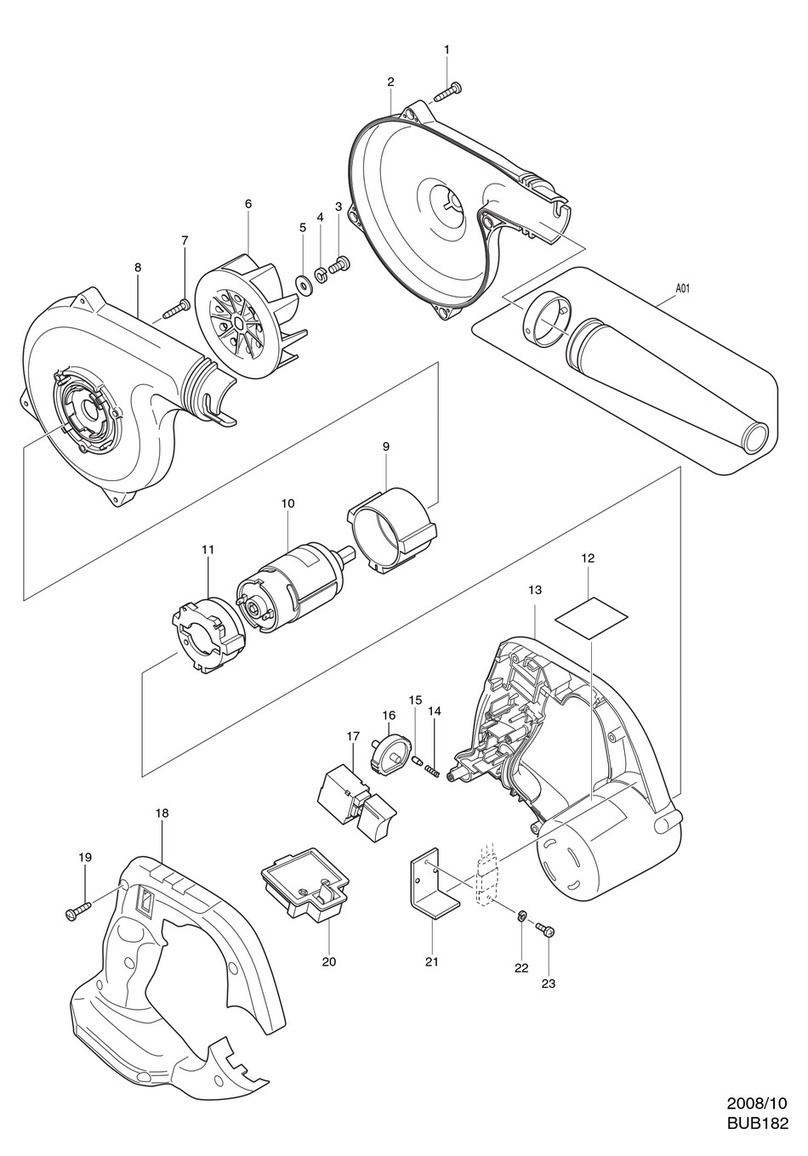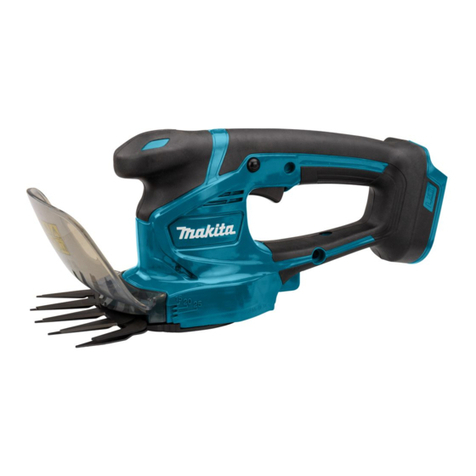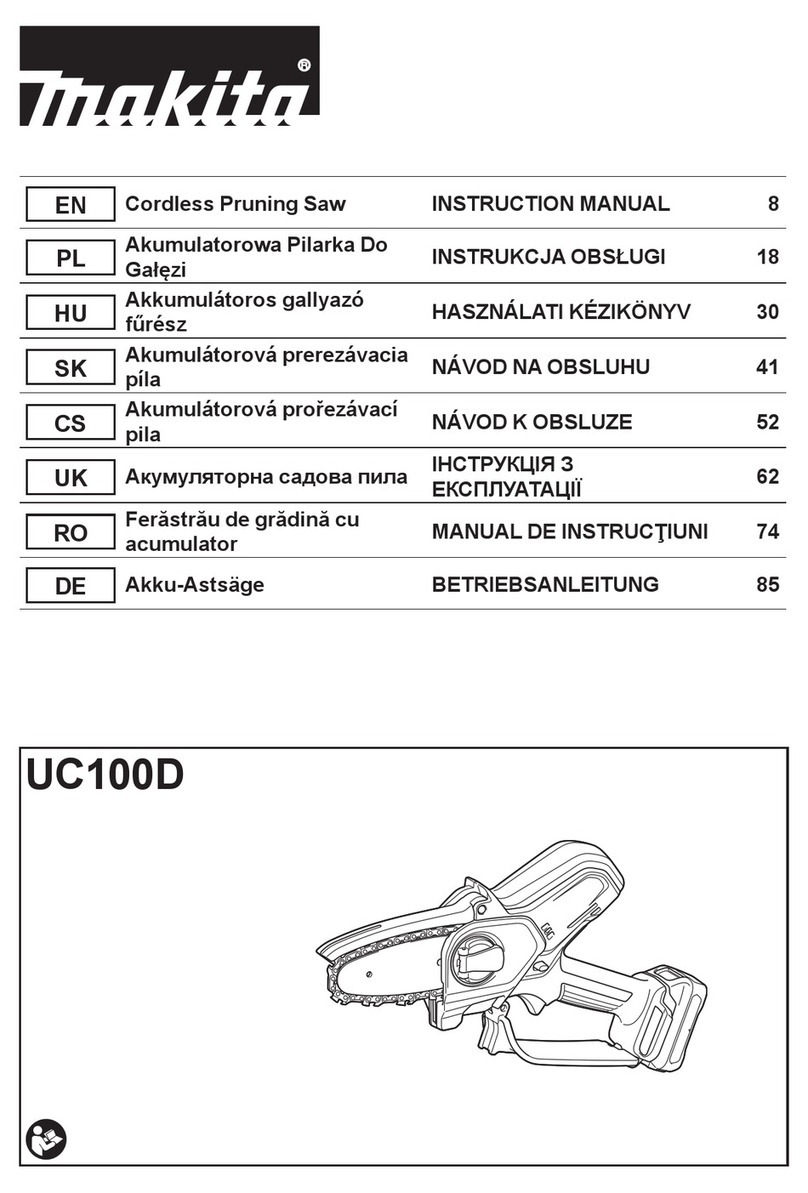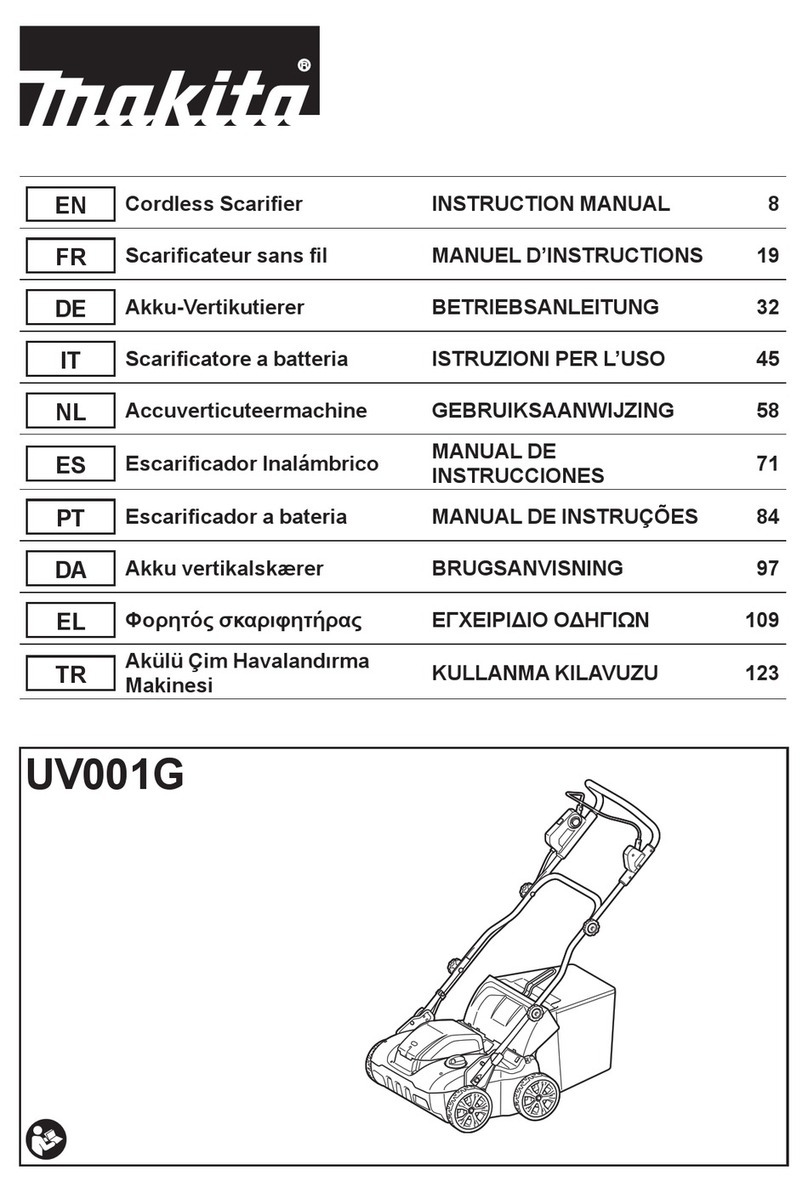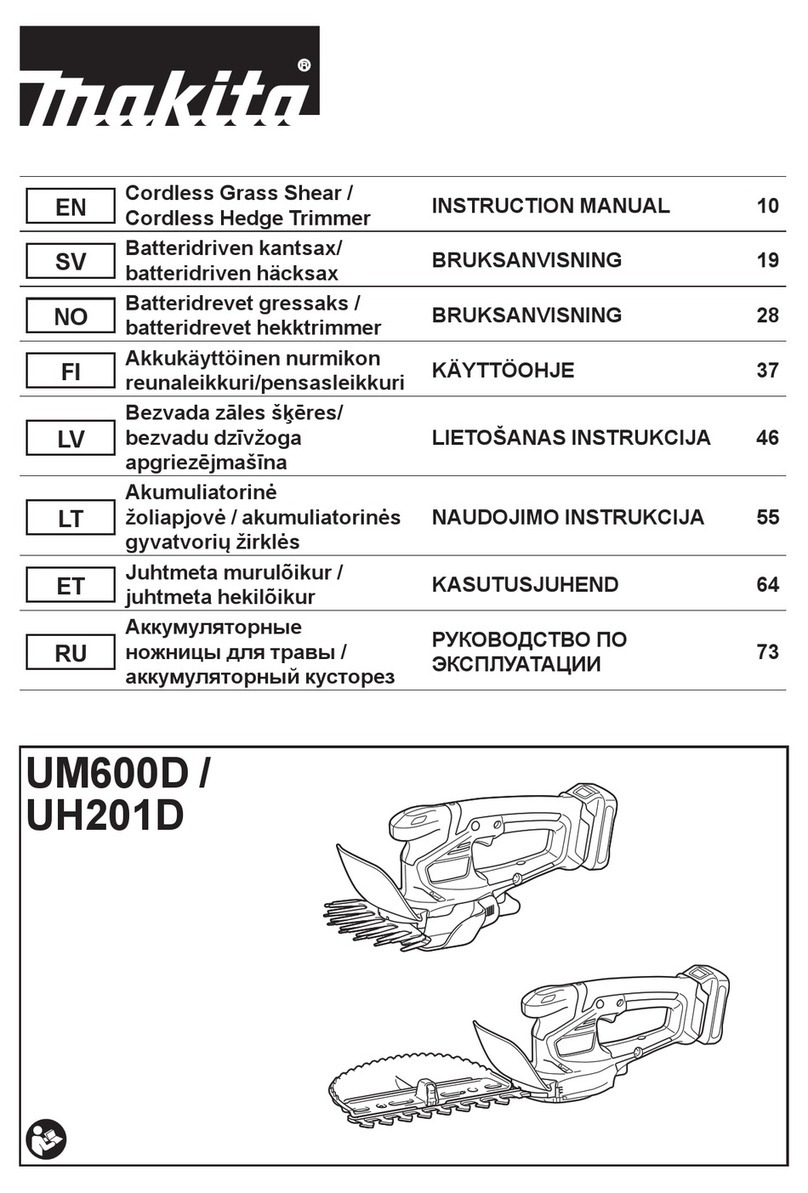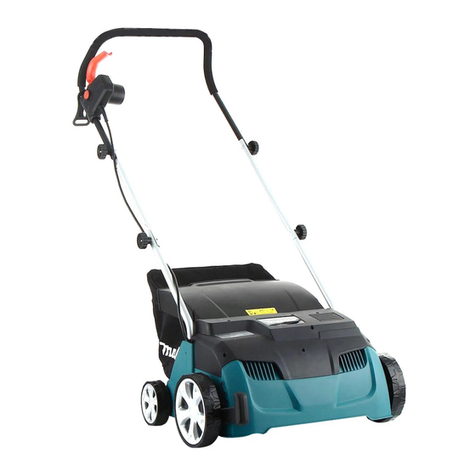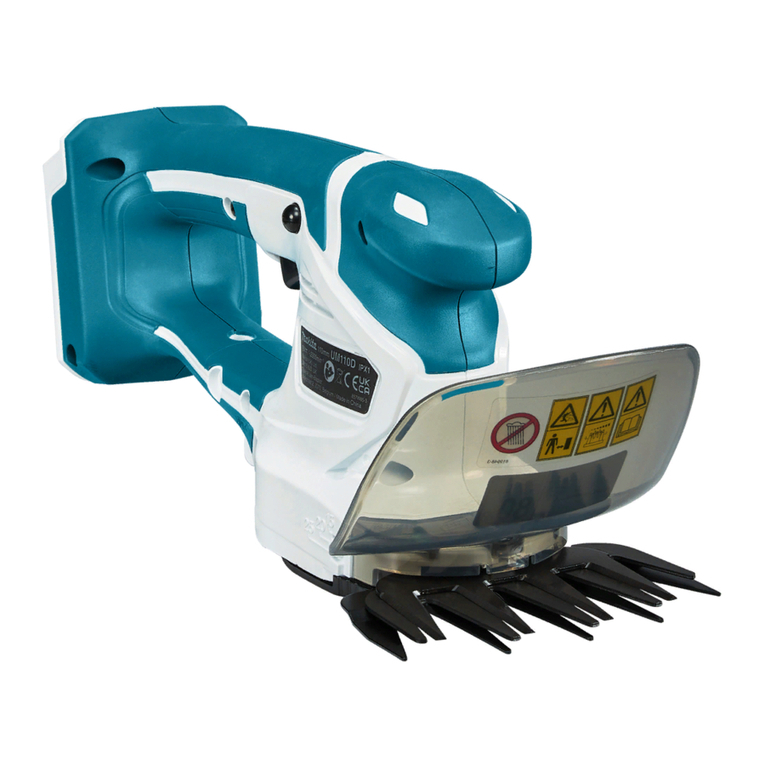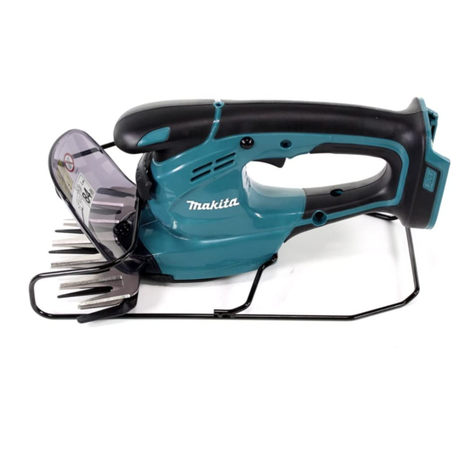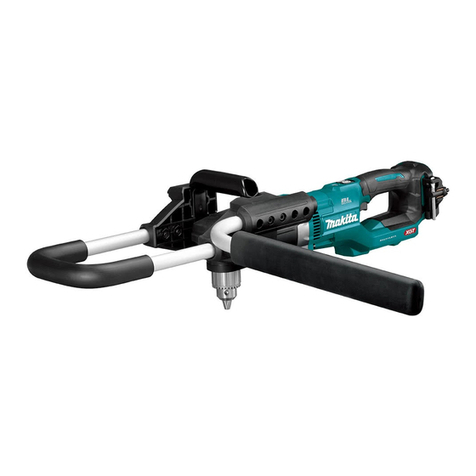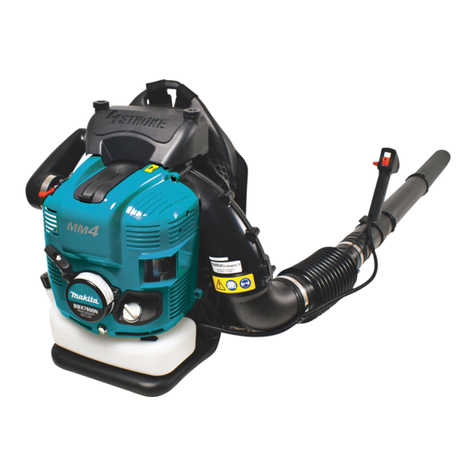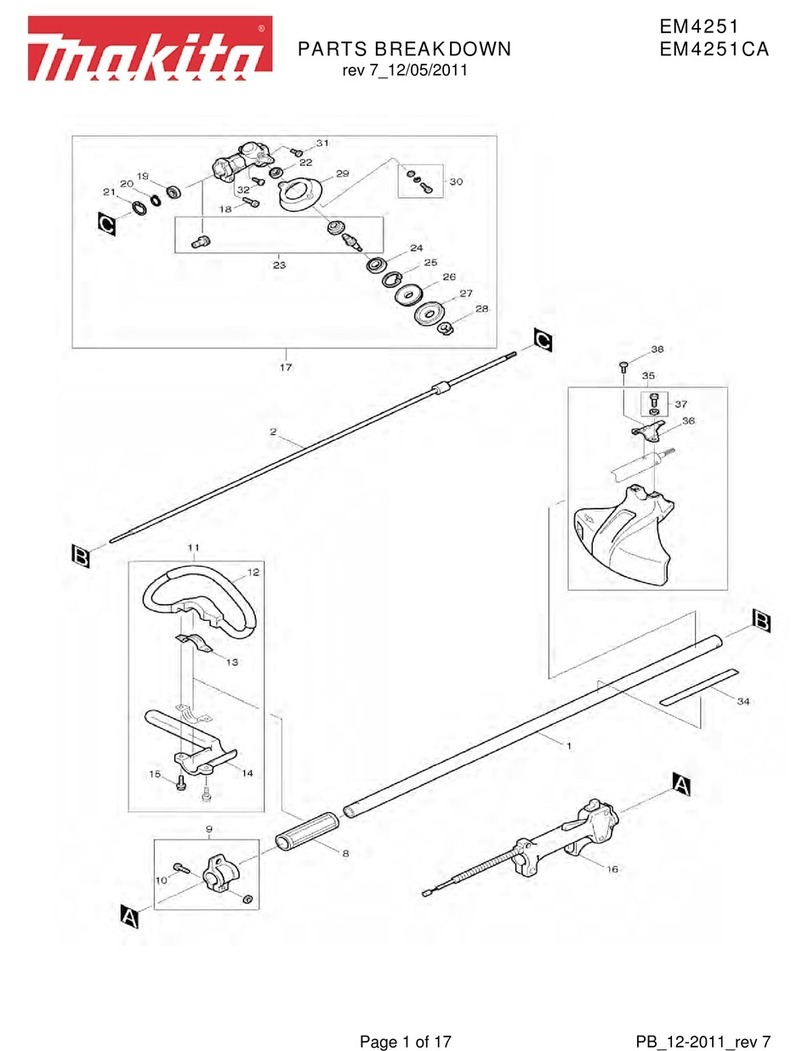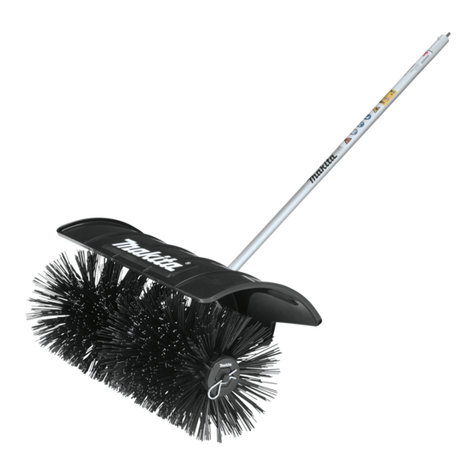
10
environmentally compatible recycling
facility.
Intended use ENE015-1
The tool is intended for cutting lawn edges or sprouts.
Cordless Grass Shear Safety
Warnings GEB070-6
General instructions
1. To ensure correct operation, user has to read this
instruction manual to make himself familiar with
the handling of the equipment. Users insufficiently
informed will risk danger to themselves as well as
others due to improper handling.
2. Never allow children, persons with reduced
physical, sensory or mental capabilities or lack of
experience and knowledge or people unfamiliar
with these instructions to use the machine, local
regulations may restrict the age of the operator.
3. Use the equipment with the utmost care and
attention.
4. Operate the equipment only if you are in good
physical condition. Perform all work calmly and
carefully. Use common sense and keep in mind
that the operator or user is responsible for
accidents or hazards occurring to other people or
their property.
5. Never operate the machine while people,
especially children, or pets are nearby.
6. The motor is to be switched off immediately in
case that the equipment shows any problem or
abnormal sign.
7. Switch off and remove the battery cartridge when
resting and when leaving the equipment
unattended, and place it in a safe location to
prevent danger to others or damage to the
equipment.
8. Avoid using the machine in bad weather
conditions especially when there is a risk of
lightning.
Personal protective equipment
1. Wear eye protection and stout shoes at all times
while operating the machine.
2. Always wear substantial footwear and long
trousers while operating the machine.
Starting up the equipment
1. Make sure that there are no children or other
people nearby, also pay attention to any animals in
the working vicinity. Otherwise stop using the
equipment.
2. Before use always check that the equipment is
safe for operation. Check the security of the
cutting tool and the guard and the switch trigger/
lever for easy and proper action. Check for clean
and dry handles and test the function of the start/
stop.
3. Check damaged parts before further use of the
equipment. A guard or other part that is damaged
should be carefully checked to determine that it
will operate properly and perform its intended
function. Check for alignment of moving parts,
binding of moving parts, breakage of parts,
mounting, and any other condition that may affect
its operation. A guard or other part that is
damaged should be properly repaired or replaced
by our authorized service center unless indicated
elsewhere in this manual.
4. Switch on the motor only when the hands and feet
are away from the cutting tool.
5. Before starting make sure that the cutting tool has
no contact with any objects.
Method of operation
1. Only use the equipment in good light and
visibility. During the winter season beware of
slippery or wet areas, ice and snow (risk of
slipping). Always ensure a safe footing on slopes
and be sure to walk and never run.
2. Take care against injury to feet and hands from the
cutting tool.
3. Never stand on a ladder and run the equipment.
4. Never climb up into trees to perform cutting
operation with the equipment.
5. Never work on unstable surfaces.
6. Remove sand, stones, nails etc. found within the
working range. Foreign particles may damage the
cutting tool and can cause dangerous kick-backs.
7. Should the cutting tool hit stones or other hard
objects, immediately switch off the motor and
inspect the cutting tool.
8. Inspect the cutting tool at short regular intervals
for damage (detection of hairline cracks by means
of tapping-noise test).
9. Before commencing cutting, the cutting tool must
have reached full working speed.
10. The cutting tool has to be equipped with the
appropriate guard. Never run the equipment with
damaged guards or without guards in place!
11. All protective installations and guards supplied
with the equipment must be used during
operation.
12. Always remove the battery cartridge from the
equipment:
- whenever leaving the equipment unattended;
- before clearing a blockage;
- before checking, cleaning or working on the
equipment;
- after striking a foreign object;
- whenever the equipment starts vibrating
abnormally.
13. Always ensure that the ventilation openings are
kept clear of debris.
14. Cutting means continues to run after the motor is
switched off.
15. If the blades stop moving due to the stuck of
foreign objects between the blades during
operation, switch off the tool and remove the
battery cartridge, and then remove the foreign
objects using tools such as pliers. Removing the
foreign objects by hand may cause an injury for the
reason that the blades may move in reaction to
removing the foreign objects.
Cutting Tools
Employ only the correct cutting tool for the job in
hand.
